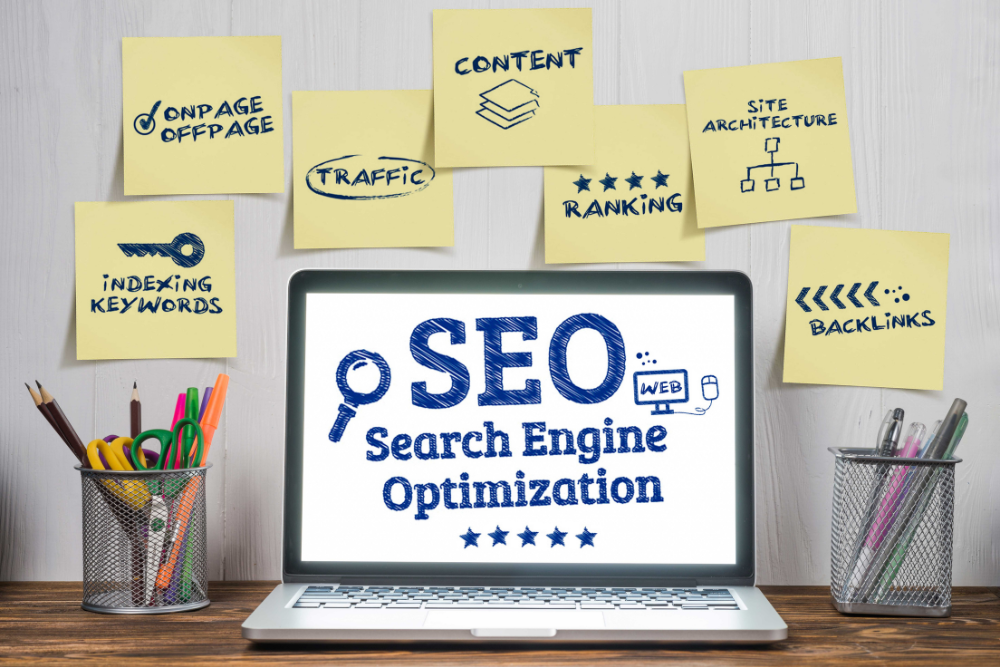Landing Pages are crucial element of any online marketing strategy. Whether you want to generate leads, drive sales, or promote a service, an effective landing page can significantly improve conversions and engagement. With WordPress, creating high-converting landing pages is easier than ever, thanks to its flexibility, vast plugin ecosystem, and user-friendly interface.
If you’re looking to increase your online presence, boost eCommerce sales, or capture more leads, optimizing your WordPress landing pages is essential. In this article, we’ll explore the best practices for creating high-performing landing pages with WordPress, along with tools and techniques that can take your website to the next level.
Why WordPress is Ideal for Landing Pages

WordPress is one of the most powerful platforms for creating custom landing pages due to its:
- Ease of Use – Even non-tech users can design stunning pages with drag-and-drop builders.
- Extensive Plugin Support – From SEO optimization to A/B testing, WordPress offers various plugins for better performance.
- Customization Flexibility – Whether using pre-built themes or custom coding, WordPress allows unlimited design possibilities.
- Seamless Integration – Connect with tools like Shopify eCommerce sites, React Native app development platforms, and CRM systems effortlessly.
For businesses focused on eCommerce development, digital marketing, or lead generation, WordPress landing pages provide the perfect combination of design freedom and conversion-driven features.
Key Elements of an Effective WordPress Landing Page

1. A Clear & Compelling Headline
Your headline is the first thing visitors see, so it should instantly grab attention and convey your value proposition.
- Keep it short and direct.
- Highlight the main benefit of your offer.
- Use power words to evoke interest and emotion.
Example: Instead of “Get Our SEO Services,” use “Boost Your Google Rankings by 200% with Our Expert SEO Strategies!”
2.Persuasive Call-to-Action (CTA)
A call-to-action (CTA) is what drives visitors to take action, whether it’s signing up, purchasing, or requesting a demo.
- Use action-oriented language like “Start Your Free Trial” or “Download Now”.
- Make it visually distinct with bold buttons and contrasting colors.
- Place it above the fold for maximum visibility.
Example: A Shopify eCommerce store can use “Claim Your 20% Discount – Shop Now!” as a CTA.
3. Minimalist & Clean Design
A landing page that is not clear will confuse visitors and reduce conversions. Follow these design principles:
- White Space: Improves readability and focus.
- High-Quality Images: Use relevant visuals to support your message.
- Mobile Responsiveness: Ensure smooth performance on smartphones and tablets.
Pro Tip: WordPress themes like Astra, GeneratePress, and Divi offer lightweight, fast-loading landing page designs.
4. Engaging & Benefit-Driven Content
Your landing page content should be concise and focused on the benefits for users.
- Use bullet points to highlight key features.
- Address pain points and how your solution solves them.
- Include social proof like testimonials and case studies.
Example: Instead of saying, “Our software has AI integration,” say, “Leverage AI-driven automation to increase productivity by 50%!”
5. Fast Loading Speed
Page speed directly impacts SEO rankings and conversions. Slow pages increase bounce rates and frustrate users.
Optimize your WordPress landing pages by:
- Using a lightweight theme (e.g., Astra or GeneratePress).
- Compressing images with Smush or ShortPixel.
- Enabling caching with WP Rocket or W3 Total Cache.
- Using CDNs (Content Delivery Networks) like Cloudflare.
Example: A React Native app development firm with a fast-loading WordPress landing page will retain more visitors.
6. Mobile Optimization & Responsive Design
With most web traffic coming from mobile devices, ensuring that your landing page is fully responsive is essential.
- Use adaptive web design to adjust content for different screen sizes.
- Ensure buttons and CTAs are touch-friendly.
- Avoid pop-ups that block content on smaller screens.
Example: A Laravel-based SaaS platform can use mobile-optimized landing pages for better sign-up rates.
7. Trust Signals & Social Proof
Building trust increases the likelihood of conversions. Add elements like:
- Customer Testimonials – Real user experiences boost credibility.
- Security Badges – Show SSL encryption, money-back guarantees, etc.
- Client Logos & Media Mentions – Showcase brands that trust your business.
Example: A WordPress development agency can highlight success stories to attract more clients.
Best WordPress Tools & Plugins for Landing Pages

A popular drag-and-drop page builder that makes designing landing pages easy.
Another great tool for building custom WordPress landing pages without coding.
3. Thrive Architect
Best for high-converting, sales-driven landing pages with built-in marketing tools.
4. SeedProd
An all-in-one landing page builder with pre-built templates, countdown timers, and form integrations.
5. WPForms
For creating conversion-focused forms and lead capture elements.
How to Optimize WordPress Landing Pages for SEO & Conversions

- Use SEO-Friendly URLs – Example: yourdomain.com/landing-page-keyword
- Optimize Meta Titles & Descriptions – Include focus keywords like “WordPress Landing Pages.”
- Implement Schema Markup – Helps Google display rich results.
- Run A/B Tests – Compare different versions of your page using Google Optimize.
- Track Performance with Google Analytics – Measure bounce rates and conversion rates.
Final Thoughts

Creating high-converting WordPress landing pages is essential for businesses looking to increase online presence, improve eCommerce development, and generate leads. By focusing on clean design, fast loading speeds, engaging content, and powerful CTAs, you can create landing pages that drive real results.
Beyond aesthetics, an effective landing page should align with user intent and business goals. Personalization, data-driven optimization, and seamless integration with marketing tools can further enhance conversions. Leveraging A/B testing, heatmaps, and analytics will help refine your pages and ensure they deliver maximum ROI. Additionally, optimizing for mobile usability and following SEO best practices will improve visibility and engagement.
Another crucial factor is trust-building—adding social proof, customer reviews, and security badges can significantly boost credibility. Your landing page should also provide a seamless user experience across all devices and browsers. With the right strategies, your WordPress landing pages can become powerful tools for growth.
At Panalink Infotech, we specialize in WordPress development, Laravel solutions, Shopify eCommerce sites, and React Native app development. Whether you need custom landing pages, plugin integration, or performance optimization, our team is ready to help.
Contact us today and we can help you create landing pages that convert!

